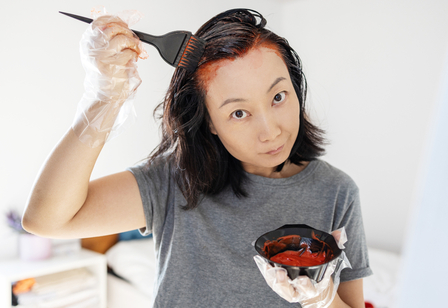
How to Colour Hair at Home Like a Pro
Become a master at DIY hair colouring in just 10 simple steps with our ultimate hair colouring guide.


Be safe, be stylish. Your five-step guide to performing a skin patch test before dyeing your hair.
Pick a suitable area on your body where the colour can sit for a while – this is typically either behind your ear or your inner elbow.
Make sure your skin is fresh and clean, so there’s no risk of any contaminants affecting your test.
Use a cotton bud to dab a small amount of hair colour onto your chosen test area and smooth it out to the size of a small coin.
Wait for 48 hours after performing your skin patch test to carry out a hair strand test to ensure no delayed skin reactions.
After the test period is over, simply wash and dry the area again to remove any hint of the hair colour.
If you experience any itching, blistering, redness or swelling where you applied the hair colour, or you notice any kind of stinging or burning sensation, wash the colour off immediately and DO NOT apply the product to your hair.
However, if your skin patch test causes no negative reactions, then you’re all set to use Directions hair colour.
Yes, you should perform a skin patch test before you apply Directions hair colour, even if you’ve used the product before. It’s an unfortunate truth that we can develop new allergies at any stage of our lives, so it’s important to always be safe and never sorry.

Become a master at DIY hair colouring in just 10 simple steps with our ultimate hair colouring guide.

Want to feel 100% about your new colour? Here's how to try before you apply with a hair strand test.

Find 6 effective ways to speed up the fading process and cut out the colour from your hair (without literally having to cut it out!).

Avoid a colour catastrophe – discover our 8 major DON’Ts for hair colouring at home.

If you’re an absolute perfectionist and want all the hair colouring tips the top professionals use, this is the guide for you!

In this article, we unravel some of the mysteries of the hair colour chart and explain why it’s essential to know what shades will blend most brilliantly to create your desired colour.